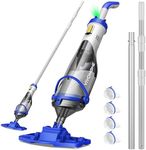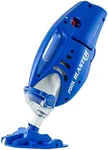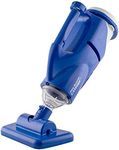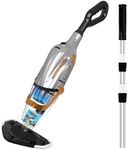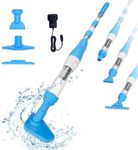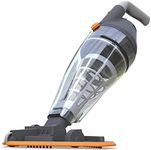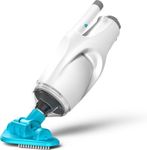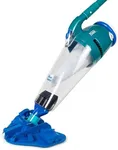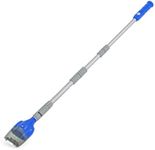Buying Guide for the Best Handheld Pool Vacuums
Choosing the right handheld pool vacuum can make maintaining your pool a much easier task. These devices are designed to help you clean your pool efficiently without the need for a full-sized vacuum system. When selecting a handheld pool vacuum, consider the size of your pool, the type of debris you typically encounter, and how often you plan to use the vacuum. Understanding the key specifications will help you make an informed decision that best suits your needs.Power SourceThe power source of a handheld pool vacuum determines how it operates. There are battery-powered, electric, and manual options. Battery-powered vacuums offer convenience and portability, making them ideal for quick clean-ups and smaller pools. Electric vacuums provide more consistent power and are suitable for larger pools but require a power outlet. Manual vacuums rely on your physical effort and are best for small pools or spot cleaning. Consider how often and where you'll use the vacuum to decide which power source is most practical for you.
Suction PowerSuction power is crucial as it determines the vacuum's ability to pick up debris. Higher suction power means more effective cleaning, especially for larger debris or stubborn dirt. Suction power can vary widely; for small pools or light debris, lower suction power may suffice. For larger pools or heavy debris, look for a vacuum with higher suction power. Assess the typical debris in your pool to choose the right level of suction power.
Filtration SystemThe filtration system in a handheld pool vacuum captures debris and prevents it from returning to the pool. Some vacuums have simple mesh bags, while others have more advanced multi-layer filters. Basic filters are suitable for larger debris, while multi-layer filters are better for fine particles like sand or silt. If your pool often has fine debris, opt for a vacuum with a more sophisticated filtration system to ensure thorough cleaning.
Weight and ErgonomicsThe weight and ergonomics of a handheld pool vacuum affect how easy it is to use. Lighter vacuums are easier to maneuver and less tiring to use, especially for extended periods. Ergonomic designs with comfortable grips can also enhance usability. If you plan to use the vacuum frequently or for long cleaning sessions, prioritize models that are lightweight and ergonomically designed to reduce strain.
Cleaning Path WidthThe cleaning path width refers to the area the vacuum can clean in one pass. A wider cleaning path means fewer passes to clean the pool, which can save time. However, wider vacuums may be harder to maneuver in tight spaces or around obstacles. For larger, open pools, a wider cleaning path is beneficial. For smaller pools or those with many obstacles, a narrower path may be more practical.
Run TimeRun time is particularly important for battery-powered vacuums, indicating how long the vacuum can operate on a single charge. Longer run times are beneficial for larger pools or thorough cleaning sessions. If you have a small pool or only need to clean specific areas, a shorter run time may be sufficient. Consider the size of your pool and your typical cleaning duration to determine the necessary run time.
